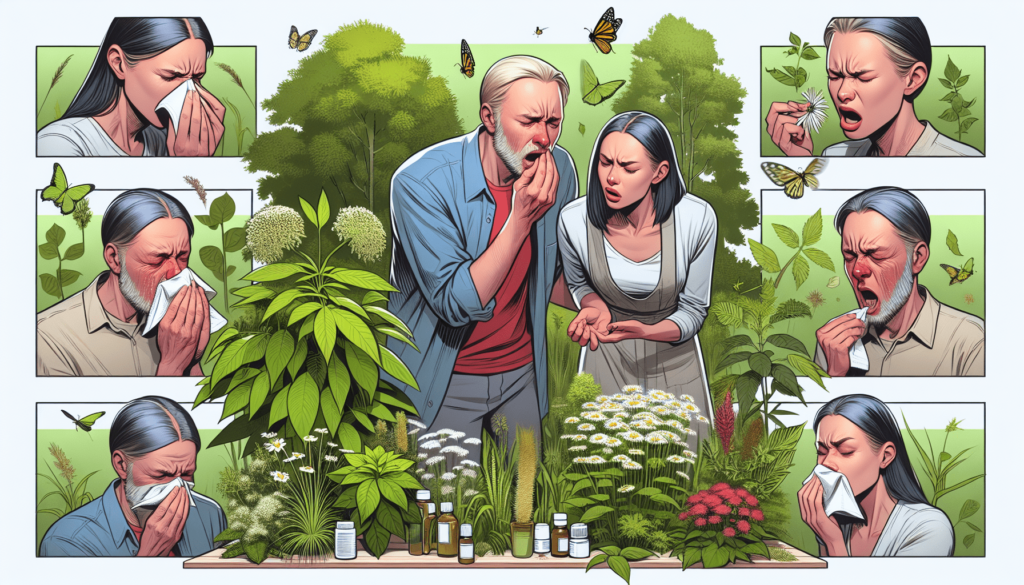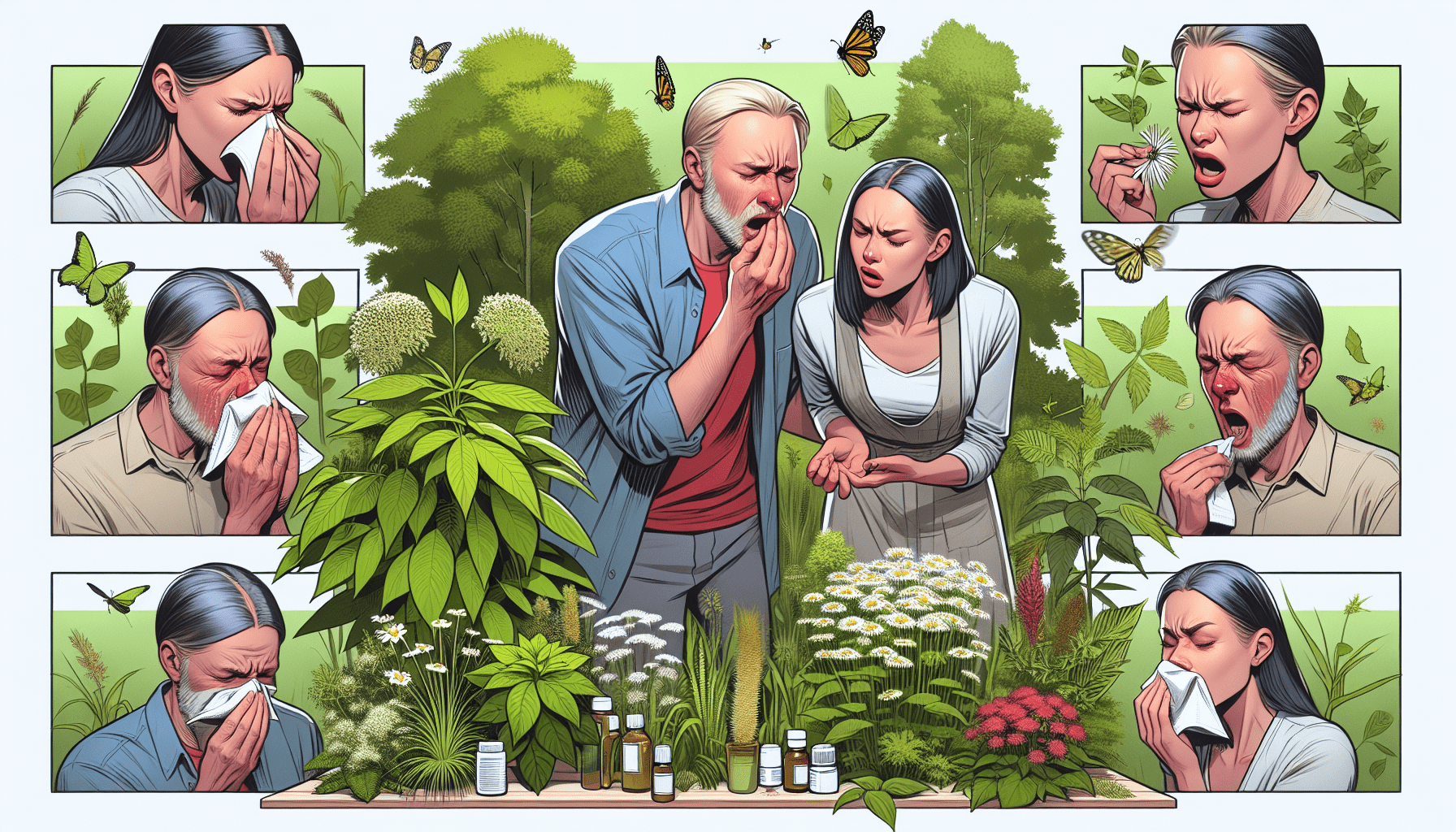Do you find yourself sneezing and sniffling every time you step outside? It might be because of common plants that are known to induce allergies. In this article, we will uncover the top allergy-inducing plants that might be triggering your symptoms. From pollen-filled blooms to unassuming grasses, we’ll explore the plants that can turn a pleasant stroll into a sneeze-fest.
Grasses
Grasses are a common source of allergies, as they release pollen into the air during the spring and summer months. There are several types of grasses that can trigger allergic reactions in individuals, including Bermuda grass, Kentucky bluegrass, Timothy grass, and Ryegrass. These grasses are known to produce high amounts of pollen, which can be easily carried by the wind and inhaled by people with allergies.
When exposed to grass pollen, individuals with grass allergies may experience a range of symptoms. Some of the common signs of grass allergies include sneezing, runny nose, itchy and watery eyes, coughing, and wheezing. These symptoms can significantly impact an individual’s quality of life and make it difficult to enjoy outdoor activities during the peak grass pollen season.
To manage grass allergies, there are several tips and precautions that you can follow. Firstly, it is important to stay informed about the pollen forecast in your area. This will help you plan your outdoor activities accordingly and avoid spending too much time outdoors when the pollen levels are high. Additionally, try to keep the windows closed in your home and car to prevent pollen from entering. Regularly washing your clothes and taking a shower before going to bed can also help remove any residual pollen that may have accumulated on your body throughout the day.
Trees
As beautiful as trees may be, they can unfortunately trigger allergies in many individuals. Some of the most common allergy-inducing trees include oak, birch, ash, maple, cedar, and pine. These trees release pollen into the air during the spring and early summer, which can cause allergic reactions in sensitive individuals.
When exposed to tree pollen, people with allergies may experience symptoms such as sneezing, stuffy or runny nose, itchy and watery eyes, coughing, and even skin rashes in some cases. These symptoms can range from mild to severe, depending on the individual’s sensitivity to the specific tree pollen.
To reduce exposure to tree pollen and manage tree allergies, there are a few useful strategies you can employ. Firstly, try to limit your time spent outdoors when the pollen counts are high, particularly during the early morning and late afternoon when tree pollen is most abundant in the air. Keeping windows closed and using air purifiers can help create a pollen-free environment indoors. If you need to spend time outdoors, consider wearing sunglasses to protect your eyes and a hat to prevent pollen from settling on your hair.
Weeds
Weeds are often the bane of gardeners’ existence, but they can also be a source of allergies for many individuals. Common allergy-triggering weeds include ragweed, pigweed, lamb’s quarters, and plantain. These weeds produce abundant pollen during the late summer and early fall, making them a significant source of allergy symptoms during these seasons.
When exposed to weed pollen, individuals with weed allergies may experience symptoms similar to those caused by grass and tree pollen. These symptoms can include sneezing, nasal congestion, itchy and watery eyes, coughing, and even skin irritation in some cases.
Controlling weed allergies can be challenging, as it is difficult to completely avoid exposure to these plants. However, there are some steps you can take to minimize your symptoms. Regularly mowing your lawn and removing any weeds in your yard can help reduce the overall pollen load. Additionally, wearing a mask when doing outdoor activities such as gardening can provide some protection against inhaling weed pollen.

Ragweed
Ragweed is a particularly notorious weed that causes allergies in many individuals. Ragweed releases a tremendous amount of pollen into the air during the late summer and early fall, making it one of the most common allergy triggers during this time of year.
When exposed to ragweed pollen, people with allergies may experience symptoms such as sneezing, runny or stuffy nose, itchy and watery eyes, coughing, and fatigue. These symptoms can be quite bothersome and make it difficult for individuals to function normally during ragweed season.
To minimize exposure to ragweed pollen, it is important to stay informed about the pollen forecast in your area and plan outdoor activities accordingly. On high pollen days, it may be best to stay indoors with windows closed to reduce the risk of exposure. If you need to go outside, consider wearing a hat and sunglasses to protect your face and eyes from pollen. It is also helpful to wash your clothes and take a shower to remove any pollen that may have collected on your body.
Birch
Birch trees are a common source of allergies, as they release large amounts of pollen in the early spring. Birch pollen allergies are especially prevalent in regions with a high population of birch trees.
When exposed to birch pollen, individuals with allergies may experience symptoms such as sneezing, runny or stuffy nose, itchy and watery eyes, and sometimes even skin rashes. These symptoms can be quite uncomfortable and affect an individual’s daily activities.
To cope with birch allergies, there are some strategies that can be helpful. Firstly, try to limit your time spent outdoors when the pollen counts are high, particularly during the early morning and late afternoon when birch pollen is most abundant in the air. It can also be useful to keep windows closed and use air purifiers to create a pollen-free environment indoors. If you need to go outside, consider wearing a hat and sunglasses to protect yourself from birch pollen.
Ash
Ash trees are another common cause of allergies, as they release pollen into the air during the springtime. Ash pollen can trigger allergic reactions in sensitive individuals, leading to symptoms such as sneezing, runny or stuffy nose, itchy and watery eyes, and even coughing or wheezing in some cases.
To manage ash allergies, it is important to stay informed about the pollen forecast in your area and plan outdoor activities accordingly. On high pollen days, try to limit your time spent outdoors or choose activities that minimize exposure to pollen. Keeping windows closed in your home and car can also help reduce the risk of ash pollen entering your living spaces. Regularly cleaning and vacuuming your home can also help remove any pollen that may have been tracked indoors.
Oak
Oak trees are a common source of allergies, as they release pollen into the air during the springtime. Oak pollen can trigger allergic reactions in sensitive individuals, leading to symptoms such as sneezing, runny or stuffy nose, itchy and watery eyes, and sometimes even skin rashes.
To minimize exposure to oak pollen and manage oak allergies, there are several steps you can take. Firstly, try to limit your time spent outdoors when the pollen counts are high, particularly during the early morning and late afternoon when oak pollen is most abundant in the air. Keeping windows closed and using air purifiers can help create a pollen-free environment indoors. If you need to spend time outdoors, consider wearing sunglasses to protect your eyes and a hat to prevent pollen from settling on your hair.
Maple
Maple trees, known for their stunning leaves and sap, can also trigger allergies in sensitive individuals. During the springtime, maple trees release pollen into the air, which can cause symptoms such as sneezing, runny or stuffy nose, itchy and watery eyes, and sometimes even skin irritation.
To reduce exposure to maple pollen and manage maple allergies, there are a few helpful strategies you can follow. Firstly, try to limit your time spent outdoors when the pollen counts are high, particularly during the early morning and late afternoon when maple pollen is most abundant in the air. Keeping windows closed and using air purifiers can help create a pollen-free environment indoors. Wearing a hat when outdoors can also help prevent pollen from settling on your hair and face.
Cedar
Cedar trees are known for their distinct scent, but they can also trigger allergies in sensitive individuals. Cedar pollen is released into the air during the late winter and early spring, making it a common allergen during these seasons.
When exposed to cedar pollen, individuals with allergies may experience symptoms such as sneezing, runny or stuffy nose, itchy and watery eyes, and sometimes even skin rashes. These symptoms can be quite bothersome and affect an individual’s daily activities.
To cope with cedar allergies, it is helpful to stay informed about the pollen forecast in your area and plan outdoor activities accordingly. On high pollen days, it may be best to limit your time spent outdoors or engage in activities that minimize exposure. Keeping windows closed and using air purifiers can also create a pollen-free environment indoors. If you need to go outside, wearing a hat and sunglasses can help protect you from cedar pollen.
Pine
Pine trees, with their distinctive scent and evergreen foliage, can trigger allergies in sensitive individuals. Pine pollen is released into the air during the springtime, and exposure to this pollen can lead to symptoms such as sneezing, runny or stuffy nose, itchy and watery eyes, and sometimes even coughing or wheezing.
To minimize exposure to pine pollen and manage pine allergies, there are a few strategies you can follow. Firstly, try to limit your time spent outdoors when the pollen counts are high, particularly during the early morning and late afternoon when pine pollen is most abundant in the air. Keeping windows closed and using air purifiers can help create a pollen-free environment indoors. If you need to spend time outdoors, consider wearing sunglasses to protect your eyes and a hat to prevent pollen from settling on your hair.
